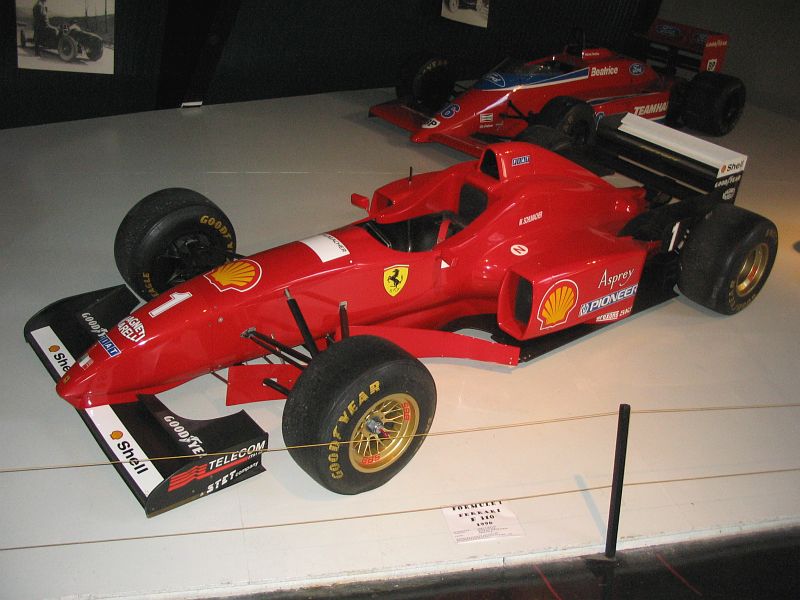Description
The Ferrari F310 was introduced for the 1996 Formula One season as Ferrari’s new challenger under the then-current 3.0-liter engine regulations. Designed by John Barnard, the car’s name reflected its engine capacity and cylinder count: 3 liters, 10 cylinders. It marked the beginning of Ferrari’s switch to V10 power after years of competing with V12 engines, signaling a change in philosophy aimed at achieving a better balance of weight, fuel efficiency, and reliability in line with the direction Formula One was taking at the time.
At its core, the F310 was powered by the Tipo 046 V10 engine, producing around 715 horsepower at 15,000 rpm. Though it lacked the outright drama of Ferrari’s previous V12s, the V10 was more compact and better suited to modern packaging and aerodynamics. This change allowed Ferrari to begin catching up with rivals such as Williams and Benetton, who had already embraced lighter, more efficient engines.
The chassis was a carbon fiber and honeycomb composite monocoque, typical of mid-1990s Formula One cars, but it was accompanied by one of Barnard’s more unusual design decisions: the use of a high, narrow nose rather than the raised-nose concept that had become increasingly popular. While visually distinctive, this approach limited the car’s aerodynamic efficiency compared to rivals. The F310 also featured pushrod suspension front and rear, along with Ferrari’s characteristic red livery accented by sponsorship from Marlboro.
In competition, the F310 had a mixed debut season. It was the first Ferrari driven by Michael Schumacher after his move from Benetton, and he quickly demonstrated the car’s potential with brilliant performances. Schumacher scored three victories in 1996, at the Spanish, Belgian, and Italian Grands Prix, the first wins for Ferrari since 1995 and a clear sign that the team was moving back toward competitiveness. His teammate, Eddie Irvine, often struggled with reliability and pace, highlighting the car’s inconsistency. Against the dominant Williams-Renault FW18, the Ferrari was not yet a title contender, but it was clear that Ferrari was finally laying the foundations for future success.
The F310 evolved into the F310B for the 1997 season, incorporating significant aerodynamic improvements and refining the V10 engine. This updated version allowed Schumacher to mount a serious championship challenge, taking the fight to Jacques Villeneuve in the Williams until the infamous collision at Jerez.
Looking back, the Ferrari F310 is remembered as a transitional car, not yet a world-beater but critically important for what it represented. It marked the beginning of Ferrari’s V10 era, the arrival of Schumacher at Maranello, and the start of a rebuilding process that would eventually lead to Ferrari’s dominance in the early 2000s. While the F310 itself was not the most successful machine on the grid, it was the spark that reignited Ferrari’s championship ambitions and set the team on the path to becoming the defining force of modern Formula One.
